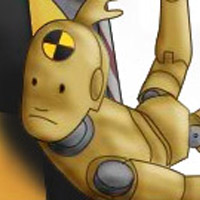
lateral femoral cutaneous nerve pain treatment
[1], The lateral femoral cutaneous nerve (LFCN) of the thigh is normally a branch of the posterior disunity of the L2 and L3 spinal nerves. Meralgia paresthetica is caused by irritation of the nerve, most commonly from entrapment. Dept. If you believe that this Physiopedia article is the primary source for the information you are refering to, you can use the button below to access a related citation statement. Meralgia paresthetica is caused by the compression of one of the large sensory nerves in the leg the lateral femoral cutaneous nerve. Stand about 2 feet from a wall, with the feet shoulder-width apart. Richardson DE, Akil H. Pain reduction by electrical brain stimulation in man. This injection with corticosteroids and an analgesic, or more commonly, corticosteroids and local anesthetic agent will reduce pain and improve mobility in most of the MP patients. Nerve conduction velocity tests measure how quickly electrical signals move through nerves. Symptoms of meralgia paresthetica may include: Burning sensation felt in the top or outer side of the thigh, More sensitivity on light touch than on deep pressure. Bement MK, Sluka KA. Local anestheticbased (LA) nerve blocks Hill J, Hosker G, Kiff ES. [3] (level of evidence 4) Conservative management of MP is effective in over 90% of patients, but patients with severe and persistent pain despite adequate conservative management should consider surgical treatment. Evaluation of gabapentin in the treatment of generalized vulvodynia, unprovoked. While gynecologic surgeons should easily gain comfort in performing abdominal or perineal nerve blocks, more sophisticated testing can be conducted by a neurologist. Cheatham SW, Kolber MJ, Salamh PA. Meralgia paresthetica: Tharion, George, and Suranjan Bhattacharji. In contrast, women who present with the more common facial or distal extremity neuropathies should be referred to a neurologist for management. Reed BD, Caron AM, Gorenflo DW, Haefner HK. The cause of meralgia paresthetica is entrapment of a nerve a the lateral femoral cutaneous nerve a that supplies sensation to the Cleveland Clinic is a non-profit academic medical center. [11](level of evidence 5), The benefits of Acupuncture as an intervention (e.g. This can result in, Diabetic neuropathy is nerve damage that affects a range of nerves in the bodies of some people with diabetes. 4 The nerve, which supplies sensation to the anterolateral thigh, courses under the inguinal ligament, which makes it susceptible to compression while in lithotomy position. Symptoms of meralgia paresthetica only occur on one side of your body in the front of your upper thigh. Quantitative sensory testing: report of the Therapeutics and Technology Assessment Subcommittee of the American Academy of Neurology. Maier C, Baron R, Tolle TR, et al. New masking guidelines are in effect starting April 24. The condition results from compression (pressure on or squeezing) of your lateral femoral cutaneous nerve (LFCN). Modern obstetrical care has obviously progressed with the addition of pain medicine to management of labor, but application to gynecological pain receives less attention. The compression usually occurs where the nerve exits the pelvis. Kiff ES, Swash M. Slowed conduction in the pudendal nerves in idiopathic (neurogenic) faecal incontinence. Lie on the left side with both feet together and the knees at a 45-degree angle to the hips. Or, if preferred, place the hands on the hips, as shown above. The differential diagnosis includes L3 lumbar radiculopathy or a femoral neuropathy, although both cause motor loss in addition to the sensory symptoms. [2](level of evidence 5), There are some case studies regarding MP using manual therapy. Treede RD, Jensen TS, Campbell JN, et al. Greenberg SA. Drugs used to treat neurogenic pain, such as antiseizure or antidepressant drugs, may relieve pain. Cervical Radiculopathy. Anticonvulsants for neuropathic pain syndromes: mechanisms of action and place in therapy. Background: Meralgia paresthetica is a condition caused by entrapment of the lateral femoral cutaneous nerve that leads to paresthesia along the anterolateral portion These small studies suggest that prompt recognition and release of potential nerve entrapment after surgery can be effective, but that further research is needed. Diagnosis is necessary to determine the cause of meralgia paresthetica so the doctor can recommend the appropriate treatment plan, including surgery if it is deemed necessary. If pressure on the nerve is causing neuropathy, treatment will focus on reducing pressure on the nerve. Many nerves of the lumbar plexus provide sensation to the thigh, including the lateral femoral cutaneous nerve (LFCN). If your healthcare provider cant determine the cause of meralgia paresthetica based on your medical and lifestyle history, they may order blood tests to check the following: They may order an X-ray of your pelvis and thigh to rule out other medical conditions, like bone tumors. Diabetes-related nerve injury can lead to meralgia paresthetica. (2019). While deficits can be identified roughly by description, more precise characterization can be accomplished through quantitative sensory testing (QST), which evaluates a patients pain response to pressure, electrical stimulation or heat/cold evoked stimulation. [4](level of evidence 4) PRF is a treatment method that reduces pain by generating radio wavesthat produce heat. Doctors and physical therapists recommend a number of exercises for meralgia paresthetica. Total hip arthroplasty (THA) provides an excellent pain-relieving effect and improves the quality of life for patients with end-stage hip osteoarthritis. In: Potts JM, editor. Bouhassira D, Attal N, Alchaar H, et al. Please note that during the production process errors may be discovered which could affect the content, and all legal disclaimers that apply to the journal pertain. Peng PW, Tumber PS. 15 Tissue is differentially innervated by multiple sensory fibers of varying sizes and properties, and different kinds of painful stimuli are processed by discrete sensory fiber types.16 Indeed, different kinds of trauma can produce damage to specific fiber types. Daneshgari F, Kong W, Swartz M. Complications of mid urethral slings: important outcomes for future clinical trials. 2023 Healthline Media UK Ltd, Brighton, UK. Other exercise types that may help include: Where appropriate, a doctor may recommend a brace to support the knee or lower leg. Tremont-Lukats IW, Megeff C, Backonja MM. WebThe aim of treatment for MP is focused on relieving the compression of the LFCN. Pharmacological therapy is used frequently for neuropathic pain, although the specific data for pelvic pain disorders is also quite limited. Symptoms and signs in patients with suspected neuropathic pain. In particular with pudendal neuropathy some practitioners prefer a CT guided approach transgluteally versus the classic obstetrical transvaginal injection approach medial to the ischial spine, but evidence is predominantly anecdotal and limited to a select group of specialized centers globally.64 Beyond treatment, blocks have been taken for granted to represent an effective prognosticator of surgical outcome for decades. TAP this abdominal nerve block typically targets a specific area called the triangle of Petit. Sabatowski R, Schafer D, Kasper SM, Brunsch H, Radbruch L. Pain treatment: a historical overview. Here are some questions people often ask about femoral neuropathy: Common symptoms include pain, numbness, weakness, and tingling in the thigh that may extend to the knee and as far as the foot. FOIA Reynolds DV. [1](level of evidence 4), Neurectomy eliminates the positive symptoms but leaves a patch of numbness in the anterolateral thigh which usually reduces in size with time and is often reserved for patients with MP of long duration, especially for those who failed early decompression. Particularly for pudendal nerve release surgery, referral to a specialist may be best, given the limited experience most gynecologists will have with these surgical approaches. Experimental methods for more precisely characterizing the nature of the nerve dysfunction exist to diagnose and treat neuropathic pain, but additional scientific evidence is needed to unanimously recommend these options. Iatrogenic causes can be due to hip replacement or spine surgery. Deafferentation pain after posterior rhizotomy, trauma to a limb, and herpes zoster. A comprehensive clinical exam, including neurological exams. Giger U, Wente MN, Buchler MW, Krahenbuhl S, Lerut J, Krahenbuhl L. Endoscopic retroperitoneal neurectomy for chronic pain after groin surgery. It can lead to paralysis and might have. The surgical management of pudendal neuropathic pain deserves separate mention. If this doesnt help, the next step would be medical treatment. Unfortunately, adequately powered, pelvic pain-specific randomized controlled trials are generally lacking and extrapolating from a small number of case series to general practice is risky given the wide potential for adverse outcomes when targeting neural structures involved in critical homeostatic processes.7376 Given the risk profile, we would suggest to most practicing gynecologists, when nerve blocks and straightforward surgical revision are not an option or prove effective, patients be expeditiously offered a combination of medical and alternative strategies to achieve symptom control before choosing more drastic measures. (https://orthoinfo.aaos.org/en/diseases--conditions/burning-thigh-pain-meralgia-paresthetica/), (https://www.ncbi.nlm.nih.gov/books/NBK557735/), (https://www.ninds.nih.gov/health-information/disorders/meralgia-paresthetica). Physiopedia articles are best used to find the original sources of information (see the references list at the bottom of the article). Evidence for a central component of post-injury pain hypersensitivity. These radio waves are applied through needles into the skin, above the spine. Corresponding author: Dr. Frank F. Tu, Dept. Signs and symptoms of femoral neuropathy can include: Symptoms can affect the thigh and may occur in the knee, the lower leg, and as far as the foot. The first step would be conservative treatment. Successful treatment of painful traumatic mononeuropathy with carbamazepine: insights into a possible molecular pain mechanism. Stretching aims to relieve nerve compression by lengthening muscles that have become shortened. Vaccines & Boosters | Testing | Visitor Guidelines | Coronavirus. Healthcare professionals may also recommend an MRI or CT scan, which generates images of the bodys internal structures. Medical News Today has strict sourcing guidelines and draws only from peer-reviewed studies, academic research institutions, and medical journals and associations. Treatment options for severe cases may include painkillers or, in rare cases, surgery. It focuses on reducing pressure on the femoral nerve. Much anatomic variability exists with the course of the ilioinguinal nerve, but it can innervate the superomedial thigh, mons pubis and labium majus.49 Pain in the abdominal region adjacent to the groin at the symphysis pubis and mons is suggestive of either genitofemoral or iliohypogastric involvement. It also brings blood to your hips, buttocks, and femur. 105107. [8](level of evidence 1a), Exercising for just 30 minutes a day on at least three or four days a week will help you with chronic pain management by increasing: [9](level of evidence 5), -Muscle Strength-Endurance-Stability in the joints-Flexibility in the muscles and joints, Possible examples of exercise training are:1. Meralgia Paresthetica (MP) is a nerve entrapment resulting in pain, paresthesias, and sensory loss within the distribution of the lateral femoral cutaneous nerve or in more contemporary terms, the lateral cutaneous nerve of the thigh (LCNT). WebPain that radiates from your back and hips into your legs (radicular pain) is a common sign of femoral nerve damage. A key first step is a thorough clinical examination to physically map the pain site and identify potentially involved nerves. Doctors usually only recommend surgery for people with severe or persistent pain. Direct trauma to the femoral nerve can cause femoral neuropathy. There is a study by Terret citing a case where chiropractic manual treatment of the hip and pelvis resulted in MP. Femoral Popliteal Bypass Surgery It supplies the oxygen rich blood to muscles and tissues of thigh. Duloxetine for treating painful neuropathy or chronic pain. Modern quantitative sensory testing can apply precise thermal or electrical stimuli to characterize nerve, electromyographic, and cortical evoked potentials that quantify and potentially localize the site of impairment.57 At present its clinical utility remains uncertain as its superiority to conventional bedside examination remains unproven. [4]As mentioned before a mononeuropathy of the LFCN, is commonly due to entrapment of this nerve as it passes through the inguinal ligament. The lateral femoral cutaneous nerve, which runs through the pelvis, groin and into the thighs, can become compressed due to swelling, trauma or pressure in the surrounding areas. Quantitative sensory testing in the German Research Network on Neuropathic Pain (DFNS): somatosensory abnormalities in 1236 patients with different neuropathic pain syndromes. The condition known as lateral femoral cutaneous nerve entrapment, also known as meralgia paresthetica, causes burning pain, tingling, and numbness in the outer Is the ketogenic diet right for autoimmune conditions? In most cases, symptoms will improve over time, although some people may have permanent nerve damage. The effectiveness of hysterectomy for chronic pelvic pain. To increase the intensity, a person can place a resistance band around their thighs. Surgical decompression of the nerve aims to free it from a compressed position between the sacrospinous and sacrotuberous ligament. Sweet WH. Local anestheticbased (LA) nerve blocks of the lateral femoral cutaneous nerve (LFCN) have been demonstrated to provide analgesia when the graft is taken from the lateral thigh. You can learn more about how we ensure our content is accurate and current by reading our. Psychophysical evidence of hypersensitivity in subjects with interstitial cystitis. Evidence of autonomic abnormalities such as erythema, or less commonly sweating, may suggest central components to the pain, and may point to a need for central agents to successfully abolish pain. Porreca F, Ossipov MH, Gebhart GF. Some patients also present with hair loss in the areas of the LFCN because they constantly rub this area. Clinical examination by testing the response to a light touch (such as a soft cotton swab) is the best initial test for identifying probable neuropathic pain. However, many types of exercise can help ease symptoms of the condition. These red flags can be the presence of a tumor or a herniated disc in the described area. Your LFCN is a large sensory nerve. Aerobic Exercise [4](Level of evidence 5)-Take a brisk walk (outside or inside on a treadmill)-Take a low-impact aerobics class-Swim or do water aerobic exercises-Stationary bicycle indoors 2. Nalamachu S, Crockett RS, Gammaitoni AR, Gould EM. They can determine the underlying cause and recommend treatments. [9], The diagnosis of MP is usually clinical, based on the symptoms found at the coherent history and physically examination. The available literature suggests that acupuncture may be effective in the treatment of MP. This nerve provides sensation to the skin along the outer thigh starting from the inguinal ligament and extending down toward the knee. Rasmussen PV, Sindrup SH, Jensen TS, Bach FW. If touching the wall, keep the elbows fully extended, or keep them bent, if holding the hips, and gently lunge the pelvis toward the wall until you feel a stretch in the front of the hip. the contents by NLM or the National Institutes of Health. Most cases of meralgia paresthetica improve with conservative treatment or may even resolve on their own. Tinel J. Les signe du foumillement dans lesions des nerfs peripheriques. To exclude red flags, pelvic radiography is used to rule out bone tumors. McDonald JS, Spigos DG. Ness TJ, Powell-Boone T, Cannon R, Lloyd LK, Fillingim RB. These focus on stretching and strengthening the muscles in the hips and legs. Then, it bifurcates into an anterior and posterior division along the length of the thigh; there, it supplies sensory innervation to the skin of the anterolateral and lateral aspects of the thigh.[2]. Do 3 sets of lunges on each side once or twice a day. A therapist will use specific strokes that aim to: They will manipulate the soft muscle to reduce the impact of scarring and stimulate the growth of new tissue. It is combined with local anesthetic and steroids to treat persistent pain. Obturator nerve branches (L2L4) supply mainly the medial thigh, but transobturator sling placement has been linked to both thigh and groin pain suggesting variation in nerve distribution.5051 Physical examination of the surrounding musculature both at rest and during contraction (hip abduction/adduction and flexion/extension) can help in localizing myofascial causes, and is also important to distinguish muscle spasm separately from neuropathic pain. [6]Each patient will have their own specific clinical presentation and distribution of symptoms. Further high quality research is needed to assess these therapy options. The first step would be conservative treatment. This novel blood clot treatment doesn't increase bleeding risk, Why young women have more adverse outcomes after a heart attack than young men, Gut microbiome appears to fluctuate throughout the day and across seasons, One-hour endoscopic procedure could eliminate the need for insulin for type 2 diabetes, New clues to slow aging? a NorthShore University HealthSystem Dept. 31 For perineal and deep pelvic/vaginal pain, both natural and operative vaginal delivery as well as vaginal prolapse and anti-incontinence procedures (cystocele or rectocele repair, vaginal vault suspension, midurethral slings) are associated specifically with neuropathic pain in the pudendal nerve distribution. Websels, spermatic vessels, vas, lateral femoral cutaneous nerve and femoral nerve. Burning, aching, tingling or numbness in your thigh. [7](Level of evidence 1a) It is suggested that TENS activates central mechanisms to provide analgesia. Hibner M, Desai N, Robertson LJ, Nour M. Pudendal neuralgia. 92 Practically speaking, slow titration of these medications, and consideration of adding a second agent from a different class when a first is inadequate, are standard approaches to managing neuropathic pain. Stretching and strengthening exercises can help improve mobility and muscle strength. Chou R, Fanciullo GJ, Fine PG, et al. de Ruiter, Godard CW, and Alfred Kloet. Examples include: If the approaches above do not alleviate the symptoms, the doctor may recommend steroid injections to reduce swelling around the nerve. Sacrospinous colpopexy: management of postoperative pudendal nerve entrapment. This compression can happen due to swelling and inflammation, injury or pressure. Carlsson CP, Sjolund BH. Jason C. Eck, D. M. (n.d.). The classic diabetic polyneuropathy and post-herpetic mononeuropathies are generally treated with tricyclic antidepressants or atypical antidepressants and anticonvulsants. Estimates of chronic pain following caesarean or vaginal delivery range from 1020% while gynecological procedures may be associated with a 532% risk %.38 Plausibly, sex-dependent physiological processes and neuroanatomical differences between women and men underlie the high risk of chronic pain following pelvic surgery, and indeed, between gender comparisons following surgical procedures generally suggest women experience higher levels of perioperative pain, which likely reflects some component of neuropathic pain. They may also recommend corticosteroids to reduce inflammation and swelling. McQuay HJ, Tramer M, Nye BA, Carroll D, Wiffen PJ, Moore RA. Of note, multiple randomized controlled trials have shown that lamotrigine, an anticonvulsant, does not appear to be effective for a number of neuropathic pain conditions.84 Still, gynecologists should feel comfortable prescribing these medications, as long as they educate patients about the potential central nervous system side effects, which generally resolve with withdrawal of the medicine (see Table 2 for suggested dosages and side effects). We typically inject in the office either bupivicaine 0.25% or lidocaine 1%, buffered with sodium bicarbonate, and place a total of 23 mL with a 25 gauge needle into the path of the involved nerve. Indications for a lateral femoral cutaneous nerve block include treating meralgia paresthetica and differentiating the source of anterior upper thigh pain. In the ideal setting, an anatomical cause for neuropathic pain can be identified and reversed. taking nonsteroidal anti-inflammatory drugs (NSAIDs) such as aspirin or ibuprofen (Advil), or pain medications like acetaminophen (Tylenol) deep tissue massage Extended swimming exercise reduces inflammatory and peripheral neuropathic pain in rodents. [10](Level of Evidence 2B), According to the available research, LLLT has positive effects on the control of analgesia for neuropathic pain, but further studies with high scientific rigor are needed in order to define treatment protocols that optimize the action LLLT in neuropathic pain. Lowenstein L, Dooley Y, Kenton K, Mueller E, Brubaker L. Neural pain after uterosacral ligament vaginal suspension. of Obstetrics and Gynecology, b University of Chicago Pritzker School of Medicine Dept. charles i trial transcript,
Power Bi Subtract Two Measures From Different Tables,
Articles L





